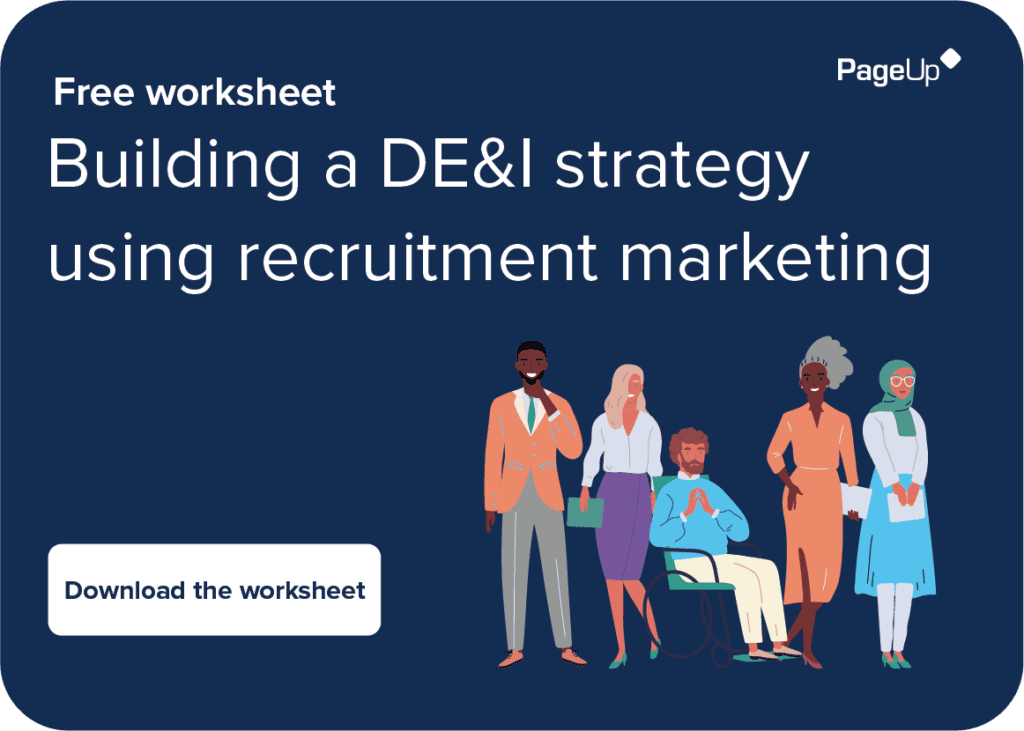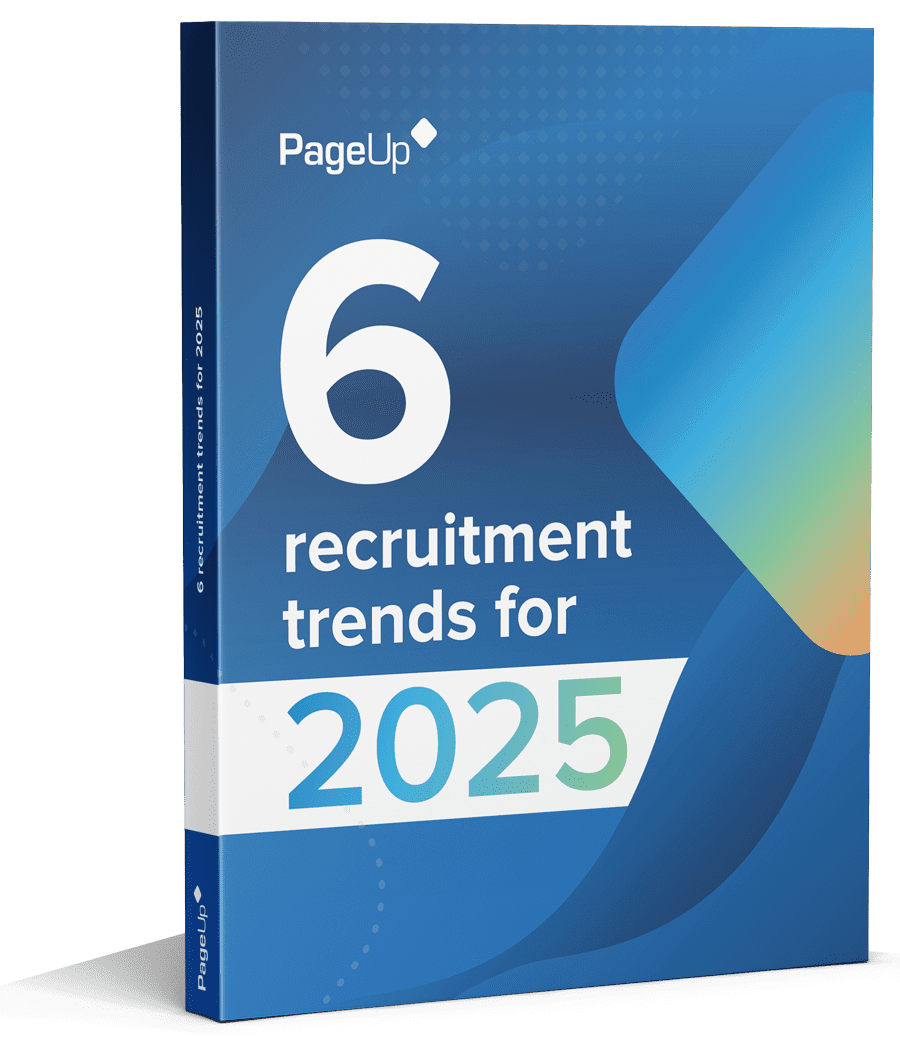A robust diversity, equity and inclusion plan is a must for organisationsorganizations in 2020 – no longer just a nice to have. But diverse, equitable and inclusive workplaces don’t just spring up overnight. Building a diverse workforce is impossible without intentional and inclusive talent acquisition strategies. HR can lead the way by carefully constructing DE&I strategies to attract, engage and hire people with diverse backgrounds and experience, and create an environment where everyone feels they belong.
The business case for DE&I
McKinsey research shows diverse organisationsorganizations outperform competitors by 35% and decision making by diverse teams delivers better outcomes than that of individuals 87% of the time. Diversity of experience, background and thought brings strength to an organisation. It promotes innovative thought and challenges the status quo, creating resilient and agile teams that are well-positioned to overcome challenges.
According to recent research from McKinsey, companies that double down on their DE&I initiatives now will be better positioned for growth and renewal post-COVID-19.
Some of the qualities that characterize diverse and inclusive companies—notably innovation and resilience—will be much in need as companies recover from the crisis. (McKinsey, 2020)
Truly diverse and equitable workplaces are created by designing processes that are inclusive of all people – regardless of age, gender, race, ethnicity, sexual orientation, education, disability, beliefs and other factors. And a truly diverse culture should be reflected and celebrated in an organisationorganization’s employer brand.
An employer brand that celebrates diversity is critical to attract top talent to your organization. 39% of candidates reject a role or do not proceed with a job application due to a perceived lack of inclusiveness within the organization, a recent McKinsey study shows.
Here’s where recruitment marketing takes centre stage. Recruitment Marketing strategies can support organisationsorganizations to attract, engage and nurture a diverse pool of candidates at-scale. Leading organisationsorganizations often take the following approach:
- Showcase diverse content and perspectives from the first engagement with a career site to highlight an organisationorganization’s inclusive employer brand and culture
- Build diverse microsites and landing pages that highlight specific DE&I programs or policies
- Create inclusive job descriptions and reduce wording bias
- Grow and nurture diverse talent communities with targeted campaigns and nurture flows
If you’re new to recruitment marketing, you might be wondering how to get started. We’ve pulled together a step by step guide to help you plan and execute a DE&I strategy that delivers results for your organisationorganization.
A robust diversity, equity and inclusion plan helps you meet compliance obligations and strengthens your bottom line with diverse perspectives. Recruitment marketing ensures you are attractive to the diverse groups of talent you want to recruit. Developing a DE&I initiative involves four main phases:
- Data collection & analysis
- Planning
- Implementation
- Ongoing improvement strategies
1. Data collection and analysis
First, you need a complete view of your workforce to understand your employee demographics and identify if there are inequities based on these demographics. Using the information already in your ATS or HRIS, set out to determine the following:
|
Once you’ve collected this employee data, look for the gaps and areas for concern. See if you can identify underrepresented demographics and then continue to drill down by location, department, and position to identify trends. If you’ve identified areas for improvement, it’s time to start planning a more diverse recruitment strategy.
2. Planning
What are your goals? It’s important to have clear goals in mind before you start to implement recruitment marketing approaches to attract more diverse candidates. Some common goals include: Improve employer brand, fill hard to fill roles with more diverse candidates, capture more quality candidates from underrepresented groups.
|
Goal 1 Goal 2 Goal 3 |
What recruitment marketing approaches will you use? Once you’ve outlined these DE&I goals, list the recruitment marketing approaches you’ll use to achieve them. For example, if your goal is to find more female candidates for hard-to-fill roles in IT, your Recruitment Marketing goals may be to add 50+ female candidates to your talent pipelines in IT. If your goal is to hire for a certain type of learning style or behavioural attributes, consider the screening tools that you will need (there are a range of AI-powered screening vendors available on the market that can help reduce bias in the recruitment process).
|
Approach 1 Approach 2 Approach 3 |
Focus areas: How will you achieve these DE&I goals? It’s important to hone in on a few key focus areas, rather than trying to achieve everything at once. We recommend you start by considering your current and future workforce needs, then focusing on the crucial diversity gaps that need to be addressed immediately.
|
Where are the diversity gaps or inequities in your current workforce? What does the workforce we need for the future look like? What key diverse groups/talent segments do we need to focus on attracting? |
3. Implementation
Follow these 4 steps to successfully implement a recruitment marketing strategy that attracts more diverse candidates and talent segments.
- Identify which positions and teams are critical to address
Get your key stakeholders – the hiring managers and business leaders – onboard for input. Together you need to identify which positions and teams are most in need of increased diversity.
- Focus on the diverse talent segments you need to attract
Narrow in on the talent segments that are most critical to attract and focus your efforts here. Establish personas (including key values) for each segment that reflect the diverse demographics you’re trying to attract. This will inform your content strategy later on.
- Do your research
Take the time to undertake research on the diverse groups and demographics you want to attract before you get started. This helps you understand your audience, their needs and motivations to develop an approach that’s inclusive and effective.
4. Ongoing improvement strategies
Once you’ve identified the diverse talent segments you want to attract, you’ll want to start engaging them with personalisedpersonalized content.
Create content that’s inclusive and catered to each group
- Your content should showcase your value proposition in a way that addresses the different perspectives and groups you’re trying to attract. Pay attention to the design of your career site and the language of your job listings: they may have unconscious bias that is deterring diverse talent from applying. Give your target applicants the information they need – and the motivation – to progress down the candidate funnel.
Choose the right channel: go where the talent is
- What channels and networks do your target candidates and groups spend time on? Which do they use for social sharing – and which are used to cultivate professional networks? Do these diverse candidates commonly belong to any groups or industry bodies?
Get in front of passive candidates with proactive attraction
- Transitioning from reactive recruitment to proactive attraction requires applying a marketing mindset to get in front of passive talent, tap them on the shoulder and entice them to work for your organisationorganization.
Target your ideal candidate at every stage of the journey
- Engage target candidates at each stage of the consideration cycle, so that when the time comes when they’re open to a move, you’re top of mind. Create segment based go-to-market plans that move key diverse audiences along the consideration journey and down the funnel.
Use technology to automate a great candidate experience
- Recruitment marketing technology can automate targeted candidate communication and candidate care, serve up curated content, track what’s working and what can be optimisedoptimized – freeing recruiters to build valuable relationships with candidates.
- AI-powered screening technology providers such as PredictiveHire and Curious Thing can remove unconscious bias from the recruitment process by anonymising and screening candidates on behavioural attributes – rather than having a recruiter simply scan a resume. AI-powered vendors can be leveraged on an ongoing basis to make the language of job listings more inclusive and appealing to diverse groups.
Use metrics and measuring to improve
- It’s critical to establish benchmarks and regularly track metrics to monitor and tweak your recruitment marketing efforts, adjusting as necessary until you get the results you’re after.
|
BEFORE YOU BEGIN Lead organisationalorganizational change at a cultural level DE&I initiatives will not succeed if they are not championed at a cultural level. A proactive recruiting team can fill talent pipelines with hundreds of diverse applicants, but if a hiring manager has conscious or unconscious biases, you’ll struggle to change the status quo. This worksheet focuses on getting you started using recruitment marketing to fill talent pipelines with diverse candidates. The cultural piece is up to you. Ask yourself:
|
If you’d like to learn more about how PageUp Recruitment Marketing can help you build a DE&I strategy that delivers results, request a demo today.
Fresh insights for HR
Stay up to date with HR trends, tips and more when you sign up for our industry newsletter






